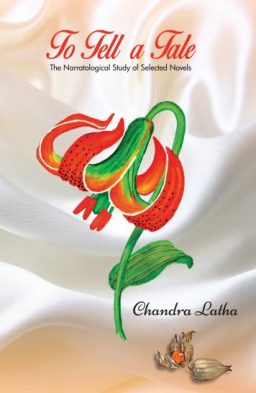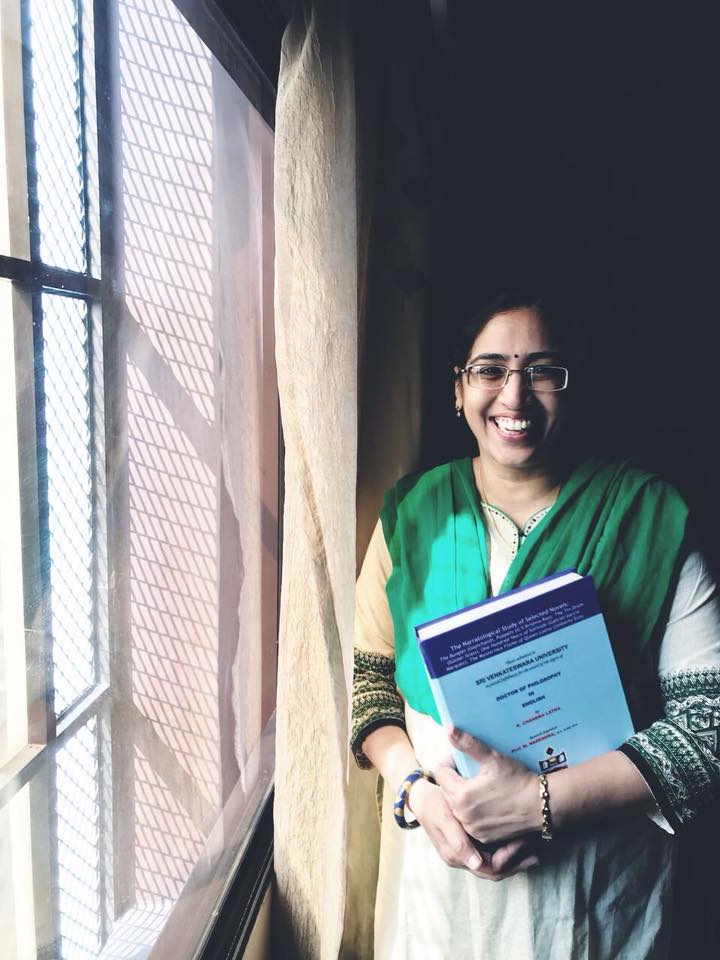
To tell a tale-11
(Chapter-2 Part-4)
-Chandra Latha
Gopichand infuses epistolary form to the narrative as a powerful means of discourse among the characters. Sitarama Rao gets a letter from his maternal uncle and Sitarama Rao responds with a request for hundred rupees. Then he gets no reply. Out raged by the lack of response, Sitarama Rao writes another letter in which he expressed his unhappiness and anger. He reminds his uncle about his generosity in settling down debts and thinks that his strong letter would make his uncle realize his mistake, repent and fulfill his duty of helping the generous nephew. But, the reply from his uncle, hits hard on Sitarama Rao. His uncle observes that Sitaramarao’s family “suffers from a delusion”, they think their family as a “special creation” and they are “superior to the rest” but all of them have” lust for flattery.” To fulfill their lust, their family did some good and some bad. His father married his mother out of generosity. His uncle was given a job that they themselves considered “menial.”
His uncle writes how he was ill treated by his father considering as strangers, lesser people, dependants, servants. Sitarama Rao’s father used to express his disgust in word and in look. The arrogance of “family lineage” was in his blood. He looked down his wife’s maternal family and they suffered. His uncle was never allowed to sit along with the family members or guests while having food. His sister used to serve him in secret as if she has “to play the servant there in her own house!” he recalls his “acerbity, insolence, venom” filled words and looks of his brother-in-law. The paternal aunt of Sitrama Rao used to harass his mother round the clock .He comments “the few days she lived, she lived like a stranger in her own house.”
His aunt was also a victim of the arrogance of their family. She walked out of her marriage unable to cope-up with her husband of “lesser” family. Both siblings were similar in treating their spouses and almost both had the same behavior. His aunt’s husband got too much vexed and one day questioned his father whether he married her or him. The marriage was broken and when the couple wanted to reconcile later, the family pride stood between their reunion.
According to the letter, it was his mother who observed the traits of his father in Sitarama Rao his mannerisms including the way he sits on a chair and swings his legs or brushes his whiskers. His uncle reveals that his father used look around like a lunatic and Sitarama Rao used to imitate him. His mother used to cry in secret to her brother worried about him growing up like a reflection of his father.
The epistolary narrative form gives a different point of view to the narrative which was until then, presented the linear point of view of Sitarama Rao. These letters changes the perception and adds different angle to the narrative. Sitarama Rao himself realizes, to his horror, a different point of view about himself, his family and lineage both in his thoughts and life.
Another unique narrative feature that Gopichand posits in his novel is caricature and graffiti. They add a different angle to the text and open up new dimensions of the psychological condition Sitarama Rao. Whenever Sitarama Rao is lost in words, he doodles. The narrative situations created for the state of “wordlessness” of Sitarama Rao, are the turning points in the narrative. This expression is rooted somewhere in the mixed feeling of anger, loss, helplessness, insult, pain, failure and oddity. It is quite instinctive and instantaneous however insane, silly or childish (Madhava Machavaram, Pg.20) the action appear to be.
The first Caricature or cartoon like figure of his father –in-law brings out the noticeable changes in his thoughts and behaviour.
After Sitrama Rao lost everything and left without regular income to run the family, his father-in-law finds him a job in a big company. Instead of writing accounts, Sitrama Rao draws the above figure (Caricature 1) of his father-in-law, in the accounts book. When the manager questions him about the caricature, Sitrama Rao replies recklessly and his indecent behaviour costs him his job. He won’t repent a bit. Moreover, he insists the manager to return the figure to him, so that he can draw the police moustache.
After Sitarama Rao read the letter from his maternal uncle, he got very angry. He got ferocious about the idea of the meeting of his uncle and father-in-law.
He picked up a pen and paper and wanted to write a fiery letter to his uncle. Instead of that, he drew the above figure, Caricature 2.
The graffiti is from the last chapter The Bungler’s End. Old Ramayya warns him that he will file a petition on behalf of Sitarama Rao’s wife and relieve her and children from Sitarama Rao and calls him a mad man.
“There is hope for repentant, not for those who seek reasons to justify their follies. Your education, intelligence is utilised to colour your misdeeds, to deceive people? Your end is near, “This drama has begun with your great-grand father’s grandfather and with you the last act has begun. In fact, the last scene is on. The curtain may fall any moment.”(The Bungler, Pg.123) Grand father Ramayya clearly expresses,” I never thought that your family would end like this, would be so degraded.” (The Bungler, Pg.123)
Sitarama Rao gets angry and he rebukes his only well-wisher Ramayya as a mad man and “swung around and ran out.” Grandchild of Ramayya calls Sitarama Rao a “horse without reins”. (The Bungler, Pg.126) Sitarama Rao strays out with his legs carrying him away. He gets a strange idea.
“Why should legs obey brain?” So, he gives independence to all his limbs. No limb shall control the other. “The brain was thinking in its own way. The hands were swinging their way, the eyes were seeing on their own.” (The Bungler, Pg.126) He was very glad about this “inner freedom” but, outwardly, there was no difference but for onlookers, his walk is faster than regular.
When someone enquires about the whereabouts of his walk, he quickly asks to enquire his legs. When somebody else wants him to slowdown for a chat, he says “No breaks !” He playfully replies to children shouts and suddenly picks up a charcoal.
He kicks the charcoal here and there and throws into the air and it comes back to him. He laughs at it’s innocence and comments, “Shameless. A wife is better than this!” and suddenly pity took over him. He starts caressing it asking the black coal whether it got hurt and kisses it .His lips and hands were left with coal marks.
Sitarama Rao suddenly realizes that the walls in the town as white. He starts drawing the graffiti.
The figure gets free limbs as he did. It’s turnip head is “lineage”, parents makes the body and hands maternal uncle (mena maama) and paternal aunt, one up and one down and finally, legs of the figure as “himself” and the feet “wife”. And, the society watching from above.
When few children approach him, and ask him to draw their figures, he scolds away saying that he won’t draw pictures of the children. Moreover, he asks them go straight pointed to their noses and can find old Ramayya who has a brush like tail (Ramayya’s pilaka) and he is an expert to draw children figures with this tail. This graffiti reflects the mind and body of Sitarama Rao. When somebody asks him whereabouts of his walk before drawing the graffiti, he replies not to ask him but his legs.
This “ME” is an existential question. Who is this ME? Head, feet, stomach hands or what? Similar dilemma is expressed later in the novel, when Sitarama Rao wants to kick the society, where shall he kick, on the head, in the stomach, or on legs. This graffiti is a testimony of several such basic questions of individuality, independence and interdependence of human life.
As this novel has a multi-fold approach with its emphasis on psychoanalysis and philosophical outlook, a constant debate flows throughout the narrative. Graffiti serves the purpose of the effect on the narrative as the writer visualises. The caricature 1, 2 and the graffiti shows that there is a transition in Sitarama Rao. The first two are creative outbursts of despair and anger, where as the graffiti reflects his attempt to recover his wits.
*****
(Contd..)

Chandra Latha, writer from Nellore won Telugu Association of North America award in 1997 for the novel “Regadi vittulu”. Her other novels are Vardhani(1995) and Vallu veellu paarijaataalu (2011). Her short fiction includes nearly 80 stories compiled in nenu nanna navutha (1996),Idam shareeram (2003) and vivarnam(2007). Her non-fiction are (Fish can fly!) ”vacche daretu(2010), itanala kadaku eeboothi boTlu(2010). And also published her blogposts in a book madata pejee(2010).
